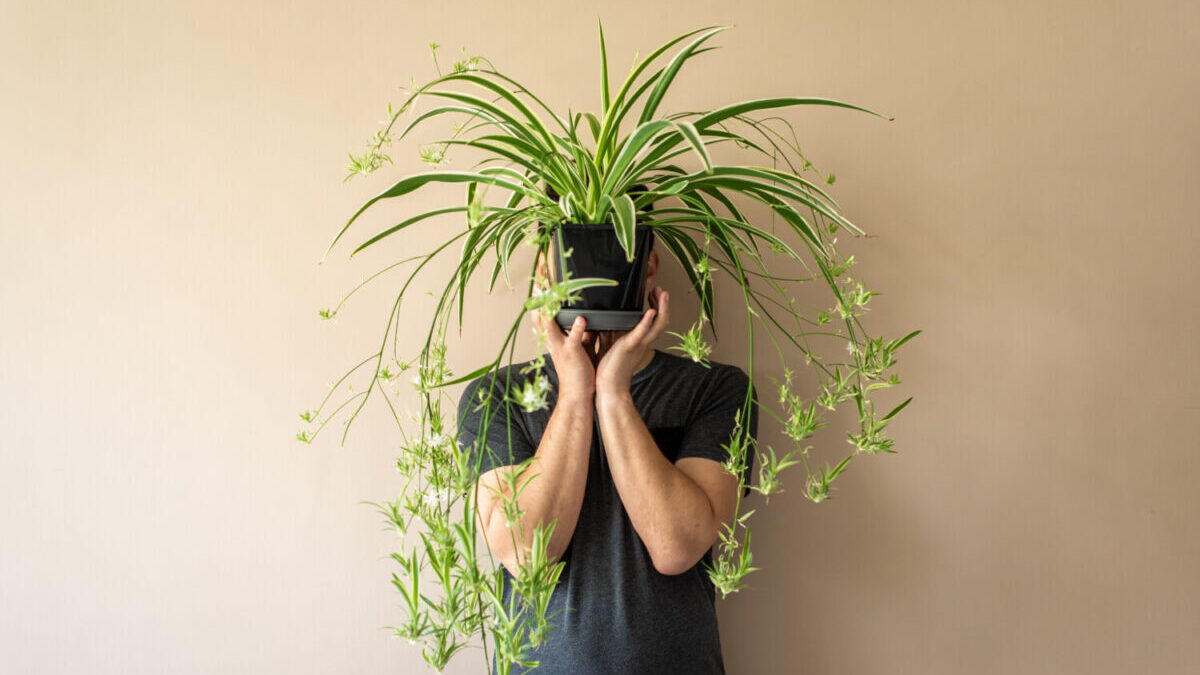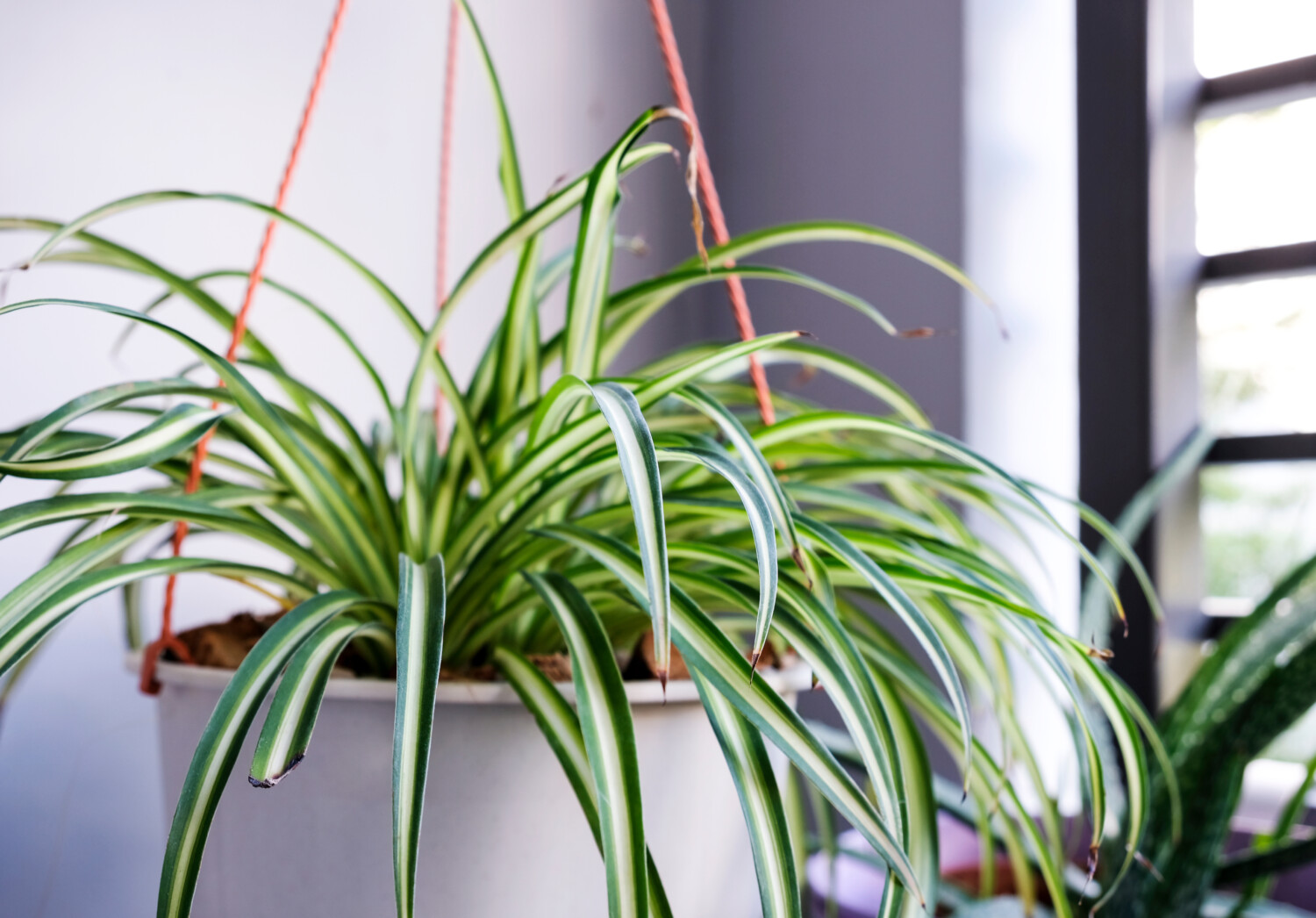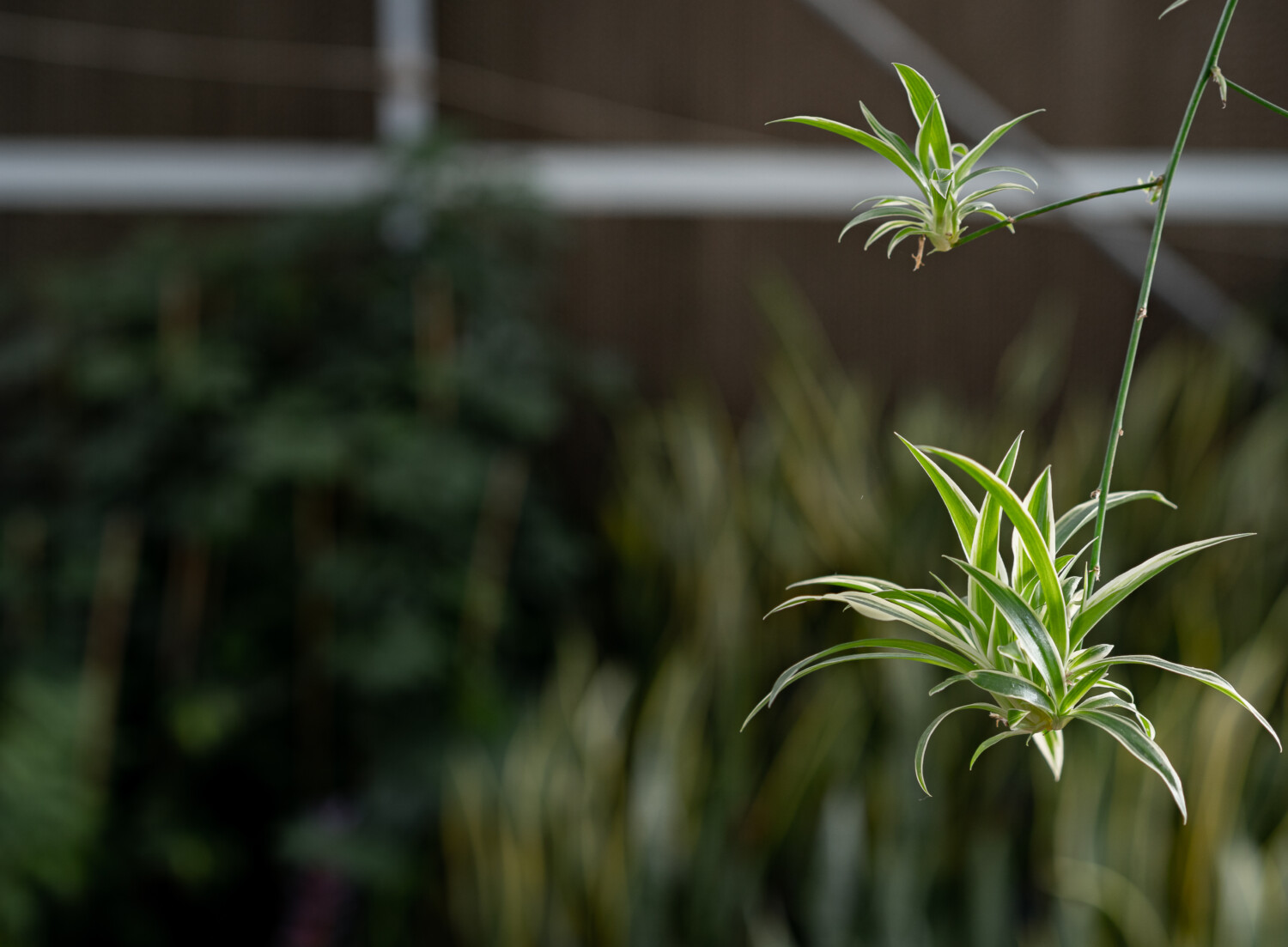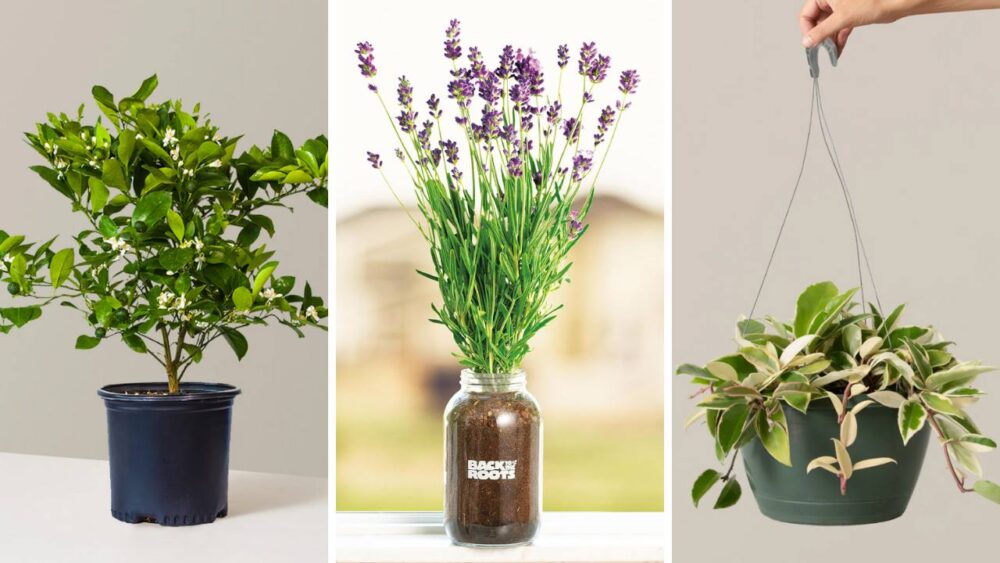How to care for a spider plant

When it comes to spider plant care, nearly anyone can do it. If you’re a beginner plant parent or gardener, a spider plant is a great choice for your home or garden.
Below, we’ve put together a simple guide with everything you need to know to help your spider plant flourish.
Spider Plant Basics
The leaves on spider plants are long and arching. They can be green or green-and-white striped. A spider plant’s height ranges between six and 12 inches while the width falls between six and 24 inches. Spider plants bloom three seasons out of the year: fall, spring and winter. Since spider plants are pet-friendly, you won’t need to worry if your four-legged friend takes a nibble.
After bringing a new spider plant home, repot it in well-drained soil and set it near a window that gets good light. Spider plants thrive in hanging baskets or macrame holders. They also look great on shelves where their long leaves can dangle down from the sides of their pot. A terracotta or similarly porous pot with a drainage hole is best — standing water is your plant’s nemesis. Use a pot that’s roughly 1/3 larger than the plant and plan to re-pot every two to three years in fresh potting mix.
Light Requirements
Spider plants thrive with a less-is-more approach. It’s better to let them get too little sunlight rather than risk burning their leaves. Put your spider plant in the warmest spot inside your home to foster growth. Rotating the pot regularly can help it grow more evenly and not become lopsided.
Spider plants like bright, indirect light; direct sunlight may burn the leaves. These plants will also grow in low light, but it will be slow and plantlets may not form (more on those below). Note, too, that if you place a striped spider plant in low light, it might lose its variegation.
Ideal Plant Climate
Spider plants grow well with average humidity and cool to average temperature, especially in USDA Plant Hardiness Zones 9 through 11. While they can tolerate warmer climates, they don’t do well in the cold. Try to avoid placing your spider plant in front of a heat source or air-conditioning unit.
Water and Soil Needs
While each plant will have its own needs depending on its pot size and environment, a good rule is to water when the top inch or two becomes dry to the touch. These plants don’t like being continuously wet. Let them dry out between watering, but know that this will happen more frequently in the spring and summer when water evaporates faster.
You can buy a soil measure meter for under $20, or you could check the soil manually every four to five days. When the soil is dry, water it enough for the excess water to drain from the bottom of the pot. To keep plants looking their best, use harvested rainwater or distilled water, which can help prevent leaf discoloration. If your plant does receive full sun, misting it first thing in the morning or just after sunset can help to prevent the leaves from burning.
During the spring and summer, fertilize your spider plant with a water-soluble fertilizer. Keep an eye out for brown leaf tips, which can be a sign of over-fertilization.
Common Care Problems
If just the tips of the leaves have turned brown, your plant is likely fine. You can trim the ends during high-growth months in spring and summer; pruning during the fall and winter isn’t recommended. If entire leaves have browned, it’s often a sign of overwatering, usually with tap water. The high salt levels in tap water can harm plants, which is why distilled or rainwater is recommended.
Good air circulation, drainage and light will prevent most plants from pest infestation. If you do notice tiny insects, wash them away with a strong burst of water in the shower or with a hose outside.
How to Propagate a Spider Plant
Purchasing one spider plant can yield several plants long-term. Mature plants blossom small, white flowers, which then form new baby plants that can be broken off to start a new plant. When a spider plant sprouts plantlets, they’re called pups. The best way to care for delicate offspring is to plant them in their own container while they are still attached to the larger plant; you can even plant several pups in one pot. Use lightweight, drainable soil and the pups should take root in their new home. Once you see new growth sprouting on the pup, it’s time to cut it off from the mature plant so it can grow on its own.
Happy growing!








